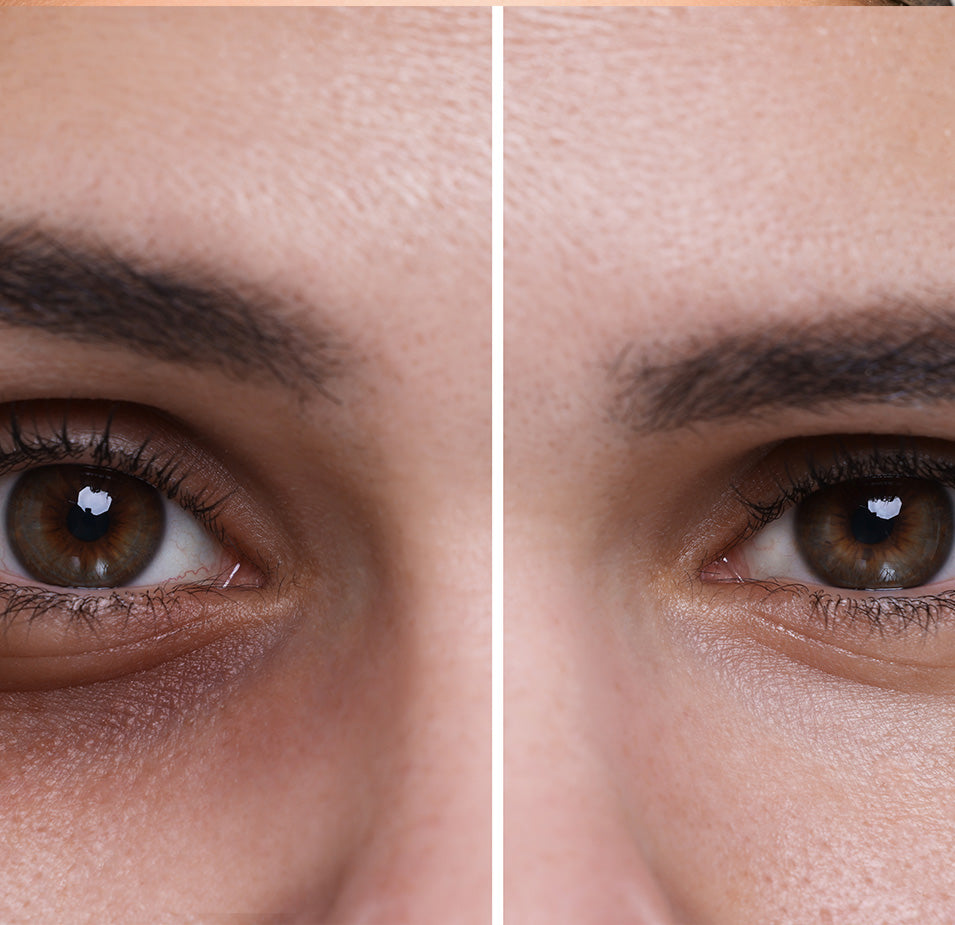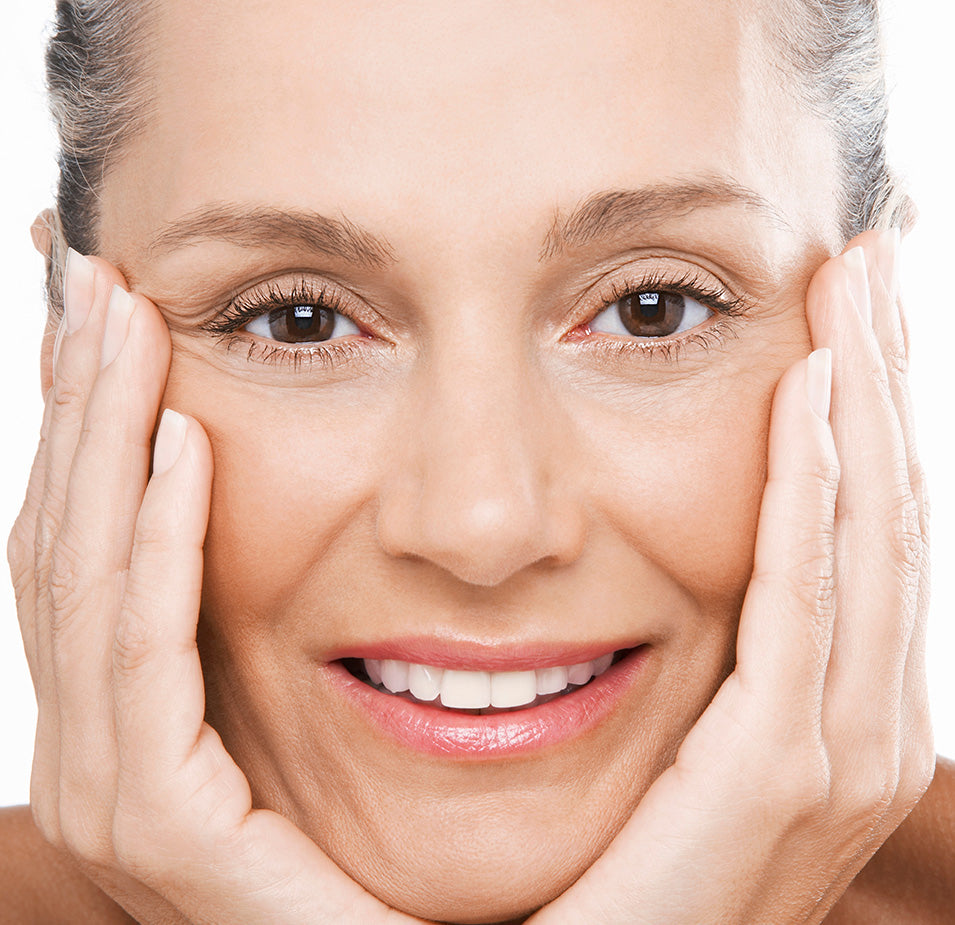
Believe it or not, the perfect skincare routine you worked so hard to dial in may completely sabotage your skin when the season changes. That holy grail product you discovered in the winter could suddenly make your skin oily when the sun comes out—not the kind of summer glow you want. Or, you might find yourself constantly moisturizing to fight dry, chapped skin all winter long if your fall routine doesn’t prepare your skin.
To achieve beautiful, happy skin year-round, it’s important to understand that your skin changes with every new season. Knowing how your skin behaves under different conditions will help you treat it right, no matter the time of year.
How Skin Is Affected by Climate
Your skin’s health and appearance is affected by every seasonal change. Just as you switch up your wardrobe according to the season, it’s also essential to adapt your skincare routine.
Everything from humidity levels to wind to temperature fluctuations can impact skin health and function. That’s why it’s so important to adjust your daily skin care routine according to the season and select products that support your skin type in those conditions.
Why does your skin behave differently in different climatic conditions?
As the body’s largest organ, the skin is your first line of defense against environmental irritants. Your skin is designed to protect your body. It’s permeable enough to absorb moisture and shed excess water and salt through sweating, yet strong enough to prevent harmful microbes and bacteria from entering. To serve these key functions, the skin has to maintain healthy moisture levels, barrier strength, and intactness.
What can you do to protect your skin through seasonal changes?

Your skin type has a big influence on how your skin reacts in different environments. For example, skin with a thicker outer layer can offer extra resistance to harsh environmental factors, making it more resilient in changing weather conditions. However, some tips are universally helpful in preserving supple, radiant skin throughout seasonal changes.
Spring Skincare Tips
During the spring season, the weather becomes unpredictable. Because our skin prefers consistency, the biggest skincare challenge we face in the springtime is adapting to rapid climatic changes.
As winter gives way to spring and the weather starts changing from day to day, the skin increases the production of sebum—an oily secretion that can lead to clogged pores and breakouts. Changing weather can also cause flareups in inflammatory conditions, such as eczema and psoriasis. To counter these abrupt changes, dermatologists recommend using mild products that help prevent inflammation and the buildup of excess oil.
Additionally, people tend to spend more time outdoors in the springtime when the sun starts to shine. Applying sunscreen whenever you’re outside is extremely important to protect your skin from harmful UV exposure.
|
Key Issues in the Springtime:
Focus On:
|
Skincare During Summer
The summer season is characterized by sun-soaked days, drawing people outside to relax and recreate. While spending time in the sunshine is good for mental health and vitamin D levels, too much exposure can be dangerous and toxic to the skin.
During the summer, the sun is physically closer to the earth, increasing the intensity of its rays. Climate change has made solar radiation even more intense, further exacerbating skin disease. Exposure to harmful UV (ultraviolet) rays is just plain bad for our skin health. Both UVA and UVB rays cause cell damage and photoaging, which means the premature onset of fine lines, wrinkles, and pigmentation.
If you’re enjoying the summer sun, be sure to use a great sunscreen to protect yourself. Sunscreen should be reapplied every two hours for maximum protection. If you slip up on sun protection, make sure to treat your skin appropriately as soon as you can.
Besides sun exposure, another concern in the summer season is increased sweating. Excessive sweating can irritate the skin, leaving you itchy and oily. Applying intense products under these conditions can heighten your risk of developing clogged pores, pimples, and breakouts.
|
Key Issues in the Summer:
Focus On:
|
Best Skincare Tips For Fall
During the transitional autumn season, the skin needs gentle care and extra hydration to recover from the summer and prepare for winter. Dryness, redness, and itching are more likely to occur in the fall.
Humidity begins to decrease in the fall, which may lead to moisture loss and dry, irritated skin. Your skin can also under-produce sebum during the fall, exacerbating dehydration and rough texture. Hydration is the number one emphasis of skincare during the fall.
|
Key Issues in the Fall:
Focus On:
|
Winter Skincare Routine
Let’s cut to the chase: the winter season is hard on our skin. Typically, people develop dry, cracked, and chapped skin in the winter, which results in itching, redness, and inflammation.
Low humidity, indoor heating, dry air, use of hot water, and extreme climate changes between indoor to outdoor environments all draw moisture out of the skin, leaving it dry, scaly, itchy, and sensitive. This dryness dampens enzyme function, which is essential for maintaining healthy glowing skin. Reduced sunlight in the winter season can also be problematic for certain skin types who rely strictly on sun exposure for vitamin D synthesis.
Because of the harsh weather, our skin needs extra love and care in the winter season. It’s especially important to choose moisturizers and lotions wisely according to skin type.
|
Key Issues in the Winter:
Focus On:
|
Other external factors impacting skin
When developing your ideal seasonal skincare routine, it’s important to consider skin health holistically. There are many factors aside from weather that can influence your skincare needs.
Lifestyle Choices
Our lifestyle and daily habits can greatly impact the health of our skin. These include:
Nutrition. Our skin relies on adequate nutrient intake to regenerate cells, maintain a strong barrier, and hold structural integrity.
Sleep. Unhealthy sleeping habits cause hormonal abnormalities, such as high cortisol levels, which can lead to acne and other skin lesions.
Drug and alcohol use. Alcohol consumption, drug use, and smoking can accelerate the development of skin aging and may lead to a host of other health problems.
Skincare and cosmetic products. The skincare products we use on daily basis serve as a protective shield against environmental toxins and irritants. However, it’s important to choose transparent skincare products that are suitable for your unique skin type.
Medications. Certain prescription medications, like hormones, affect the natural pH of skin. This can increase vulnerability to a variety of skin ailments.
Hygiene. Cleanliness plays a direct role in the maintenance of skin health by removing dead cells, debris, sebum, and other physical irritants. However, using the wrong skin cleanser (or “over-cleansing”) can strip that are essential for proper skin function. Use a gentle cleanser twice daily, upon waking and before bed.
Movement. Physical exertion and exercise aids in improving the cosmetic appearance of skin by boosting blood circulation, regulating hormones, and removing excess water, salt, and waste products.
Environmental Factors
Environmental factors are external conditions that exert impacts on our skin health. These include weather changes like the ones described above, but also involve things like air pollution, ocean pH, atmospheric pressure, salinity, and the presence of toxins. At unhealthy levels, these factors can increase the prevalence of viral, bacterial, and fungal skin diseases.
How to keep your skin healthy year-round
We cannot control the changes in weather, but we do have a say in our skin health. Adapting your skincare routine to address seasonal changes goes a long way. Additionally, making the right lifestyle choices and keeping an eye on environmental stressors will keep the skin balanced.
Implementing the products and practices outlined above in the face of changing climate conditions will minimize stress on your skin. Physical and mental health also impact your skin, so doing your best to manage your stress level, get enough sleep, exercise daily, and maintain a healthy and nutritious diet will contribute to a robust, glowing complexion.
Remember, your skin prefers stability and consistency—so when you start to feel the air get crisp in the fall or see those spring flowers beginning to bloom, it’s time to give your skin some extra love.
References
- Wan, D. C., Wong, V. W., Longaker, M. T., Yang, G. P., & Wei, F. C. (2014). Moisturizing different racial skin types. The Journal of clinical and aesthetic dermatology, 7(6), 25.
- Balato, N., Di Costanzo, L., Patruno, C., Patrì, A., & Ayala, F. (2013). Effect of weather and environmental factors on the clinical course of psoriasis. Occupational and environmental medicine, 70(8), 600-600.
- Kaffenberger, B. H., Shetlar, D., Norton, S. A., & Rosenbach, M. (2017). The effect of climate change on skin disease in North America. Journal of the American Academy of Dermatology, 76(1), 140-147.
- Lu, Z., Chen, T. C., & Holick, M. F. (2019). Influence of season and time of day on the synthesis of vitamin D3. In Biologic effects of light (pp. 53-56). De Gruyter.
- Singh, B., & Maibach, H. (2013). Climate and skin function: an overview. Skin Research and Technology, 19(3), 207-212.
- Balato, N., Megna, M., Ayala, F., Balato, A., Napolitano, M., & Patruno, C. (2014). Effects of climate changes on skin diseases. Expert review of anti-infective therapy, 12(2), 171-181.

















